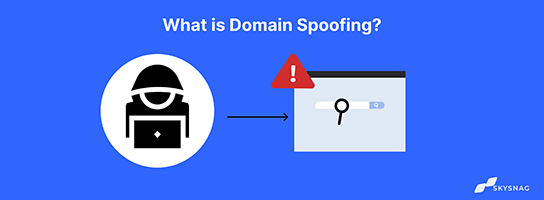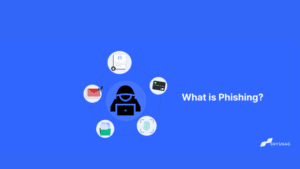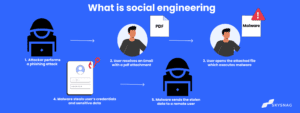What is Domain Spoofing?

In order to steal sensitive information or sell counterfeit goods, cybercriminals frequently utilize domain spoofing, which involves creating fake web domains that look legal to direct people to a fraudulent site. Unfortunately, as attackers become more sophisticated, it is becoming harder to recognize spoofing assaults.
In this article, we define domain spoofing and, more significantly, how to safeguard against it.
What is domain spoofing?
Domain spoofing is a cyberattack in which hackers seek to persuade consumers that an email or web address belongs to a legitimate and generally trusted company, when in fact, it links the user to a false site controlled by a cybercriminal.
What are the main types of Domain Spoofing?
1. Email Spoofing
In email spoofing, attackers send emails that seem to be from a known sender, like a friend, company, or governmental organization. The fraudulent emails may contain a malicious download or a link that either connects the recipient to a malicious website or reroutes the user to a domain that they did not intend to visit.
2. Website Spoofing
Attackers register a domain that resembles an authorized domain in website spoofing. This gives them the opportunity to establish a website that closely resembles the authentic one and send spoof emails to potential victims.
How Domain Spoofing attacks work
To trick users into thinking they are being sent to the correct website, attackers create web pages with characters that have been noticeably changed and send emails with fake domain names that appear real.
The fake websites serve as examples of domain spoofing, therefore it is common to employ both email spoofing and domain spoofing together.
Alternately, a domain spoofing attack could be a component of a wider assault, such as a DDoS attack, in which perpetrators flood a target website or server with traffic from fake IP addresses until those resources are depleted and the target server slows down or crashes.
How to prevent Domain Spoofing attacks
- SSL certificates: An SSL certificate is a text file that serves as a website’s identification and helps encrypt traffic to and from the website. The certificate authority will confirm the applicant’s eligibility to use a certain domain name. An SSL certificate is almost a requirement for all trustworthy websites.
- SPF, DKIM, and DMARC records – Skysnag automates DMARC, SPF, and DKIM for you, saving you the trouble and time required for manual configuration. Unlock insights, bypass email authentication configuration issues and protect your domain from spoofing with strict DMARC enforcement, all autonomously with Skysnag.
Create a Skysnag account to generate your DMARC record.
Conclusion
Most businesses will encounter a domain spoofing assault because attackers are becoming increasingly sophisticated. Therefore, each person or business needs to identify the appropriate measures to safeguard against an attack.
Skysnag provides an easy-to-configure, all-in-one solution to protect your email domain immediately. Our automated domain tools help successfully monitor every aspect of your email authentication and enforce powerful and effective protection from phishing attacks. Get started with Skysnag today by signing up for a free trial.





